 by "ttyymmnn" (ttyymmnn)
by "ttyymmnn" (ttyymmnn)
Published 03/24/2017 at 12:35
 by "ttyymmnn" (ttyymmnn)
by "ttyymmnn" (ttyymmnn)
Published 03/24/2017 at 12:35
Tags: Planelopnik
; planelopnik history
STARS: 11
Welcome to This Date in Aviation History , getting you caught up on milestones, important historical events and people in aviation from March 22 through March 24.
!!! UNKNOWN CONTENT TYPE !!!
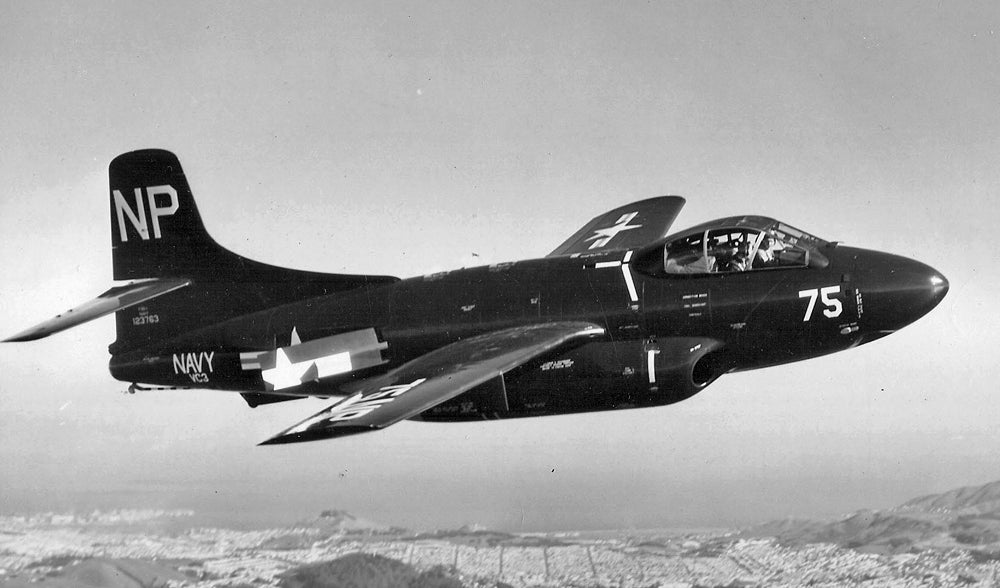
March 23, 1948 – The first flight of the Douglas F3D Skyknight. Today, modern jet fighters with powerful radars are capable of locating and destroying enemy targets in day, night and in all types of weather. But in WWII, when radar tracking systems were in their infancy, special night fighters were developed to carry the early radar sets aloft and seek out enemy aircraft, and the designation of day fighter or night fighter continued after the war into the early jet age. In 1945, the Navy issued a requirement for a jet-powered, radar-equipped night fighter that would be capable of operating from aircraft carriers. They accepted proposals from Grumman and Douglas, with the Skyknight being awarded a development contract on April 3, 1946. Unlike the Grumman design, which featured four engines, lead designer Ed Heinemann and the team at Douglas created a twin-engine design built around two Westinghouse J34 engines housed in nacelles nestled along the side of the fuselage. Following standard postwar design practices, the Skyknight had straight wings and tail, and the J34 engines gave it a top speed of 565 mph. The pilot and radar operator sat side-by-side in a large cockpit, but they had no ejection seats. In case of emergency, the crew would exit the aircraft through an escape chute and drop out of the bottom of the aircraft, similar to the system that would later be used on the Douglas A-3 Skywarrior . The Skyknight also carried a total of three radars. Two were housed in the bulbous nose, with one acting as a search radar and the other as a tracking radar. The third radar was located in the tail to alert the crew to attacks from behind during night missions. Once the enemy was targeted with the attack radars, the Skyknight crew could engage it with four 20mm cannons, rockets, and eventually Sparrow air-to-air missiles.
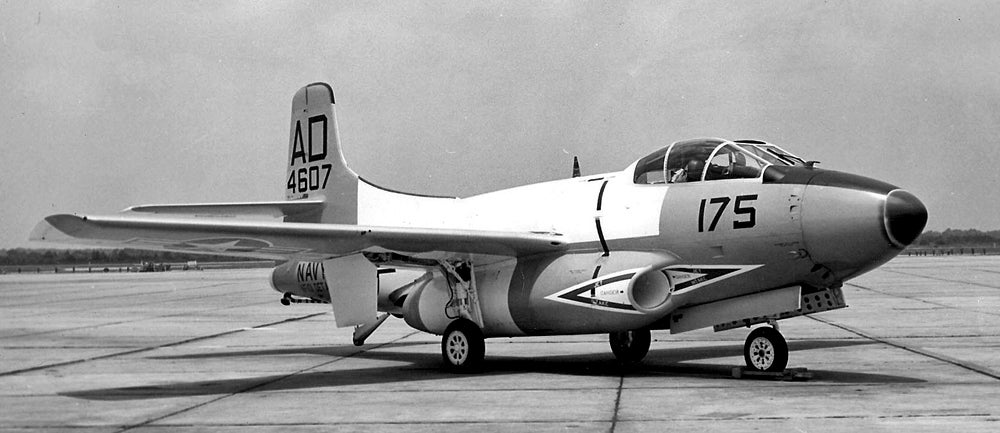
While the F3D, later renamed F-10, was never designed to be a dogfighter, it’s handling capabilities were still quite good, and it could could even out turn the Soviet MiG-15 . During the Korean War, the US Marine Corps operated the upgraded F3D-2 Skyknight from land bases, usually in support of nighttime bombing missions, and on November 2, 1952 Marine Corps pilot Maj. William Stratton and radar operator MSGT Hans Hoglind of VMF-513 Flying Nightmares claimed the first radar-led kill of one jet by another when they shot down a North Korean Yak-15 . That same year, the Skyknight claimed the first radar lock-on kill of an enemy aircraft without visual contact when USMC pilots downed a North Korean Polikarpov Po-2 . Throughout the war, Marine Corps pilots flying the Skyknight were responsible for destroying more enemy aircraft than any other US Navy fighter. The Skyknight was slowly phased out following the Korean War, but it continued to serve as a test platform, particularly during the development of the Sparrow missile, and it was the first aircraft to be fitted with an operational radar-guided air-to-air missile. The Skyknight was also the only Korean War-era jet to also see service in Vitenam, where it flew as an electronic warfare platform prior to the introduction of the Grumman A-6 Intruder . Marine Corps Skyknight pilots made history again when they carried out the first airborne radar jamming mission in support of a US Air Force raid on missile sites near Hanoi in 1965. While only 265 Skyknights were produced, they hold an outsized place in Naval aviation history, with the last Skyknight serving until 1970. (US Navy photos)
!!! UNKNOWN CONTENT TYPE !!!
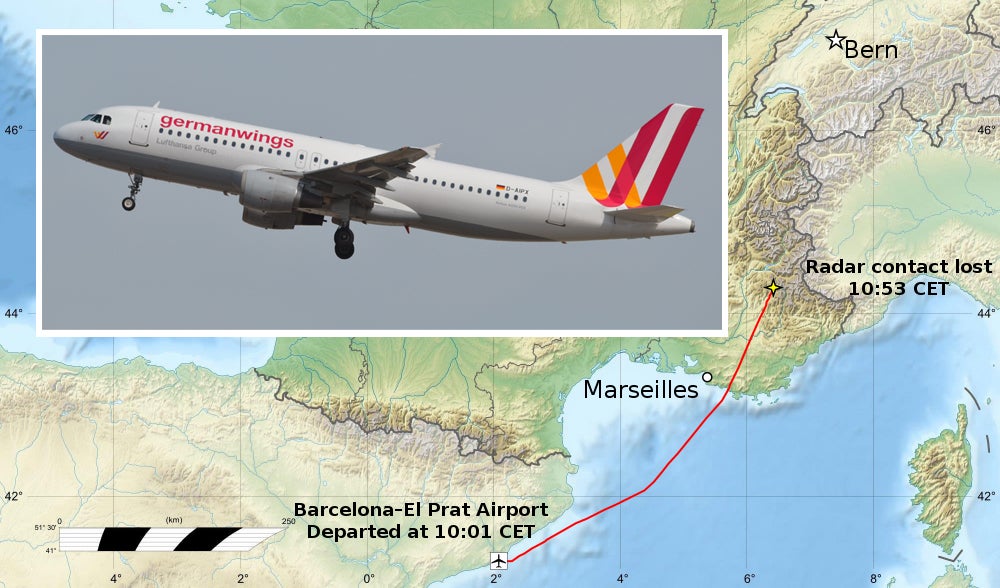
March 24, 2015 – The crash of Germanwings Flight 9525. Whenever we board a commercial airliner, we can generally be assured that the pilot is in no more of a hurry to crash the plane than we as passengers are, and that the pilot in command will do everything in his or her power to prevent a crash. But on a number of occasions in commercial aviation history, airline passengers and people on the ground have fallen victim to a deranged pilot who commits what is known as suicide by pilot , where the pilot, for whatever reason, chooses to crash the aircraft intentionally, taking all on board with him. While the occurrences are rare, they do happen. In recent history, the first officer of EgyptAir Flight 990 allegedly locked the captain out of the cockpit and flew his Boeing 767 into the Atlantic Ocean, killing 217 passengers and crew. Though the intentions of the EgyptAir pilot cannot be proven, there can be little doubt about what happened to Germanwings Flight 9525, when first officer Andreas Lubitz deliberately crashed into the French Alps while piloting an Airbus A320 (D-AIPX). Lubitz became a trainee pilot for Germanwings’ parent company Lufthansa in 2008, but suspended his training voluntarily after being hospitalized for severe depression. In 2013, he reentered the training program, this time in the United States. After a stint as a flight attendant, Lubitz joined Germanwings as a first officer in 2014. On the day of the crash, Lubitz was flying with Captain Patrick Sondenheimer, who had flown for Germanwings for 10 years and amassed 6,000 flight hours. Once the aircraft reached its cruising altitude of 38,000 feet on a flight from Barcelona to Düsseldorf, Captain Sondenheimer left the cockpit for a bathroom break. Once Sondenheimer was out of the cockpit, Lubitz locked the door and initiated a rapid descent, setting the autopilot for an altitude of 100 feet and pulling the engines back to idle. When the captain returned from the lavatory, he found the cockpit door locked, and the entry code no longer worked, as Lubitz had apparently disabled it. The cockpit voice recorder (CVR) captured the sounds of Captain Sondenheimer first requesting reentry to the cockpit, then sounds of him banging on the door, followed by sounds of him trying to break the door down. The screams of passengers were also heard on the recording. Lubitz said nothing, and the only sound recorded from his was his slow and steady breathing. Lubitz ignored repeated attempts at communication from air traffic controllers, and a French Mirage fighter was scrambled to the scene. After a 10-minute descent, the airliner crashed into the Alps with such force that rescuers found no piece of the airliner larger than an automobile. All 150 passengers and crew were killed, making it the second worst suicide by pilot in history after the alleged EgyptAir crash, and the deadliest air crash in France since 1981. The subsequent investigation focused immediately on First Officer Lubitz. A search of his apartment found no suicide note, but investigators did discover a letter addressed to Lubitz stating that a doctor had deemed him unfit for work. Though Lubitz had failed to notify Lufthansa of his status, it is also illegal in Germany for a company to access employees’ private medical records, so there was no Lufthansa could have known of this change in medical status. Investigators also found that Lubitz was taking prescription drugs, and had been diagnosed with a psychosomatic illness. Perhaps most damning, investigators also found search records on his computer for “ways to commit suicide” and for descriptions of the security provisions of aircraft cockpit doors. They also discovered that Lubitz had been treated for suicidal tendencies and had been denied a commercial pilot license in the US. As a result of the crash and investigation, authorities in 7 countries instituted a policy requiring that there be at least two crew members in the cockpit at all times (the US, China, and other European countries already had such a requirement). However, mandatory psychological evaluations were not required. The preliminary report by the Bureau d’Enquêtes et d’Analyses pour la Sécurité de l’Aviation Civile (BEA) can be found here . (Photo by Sebastien Mortier via Wikimedia Commons ; map by AHeneen via Wikimedia Commons )
!!! UNKNOWN CONTENT TYPE !!!
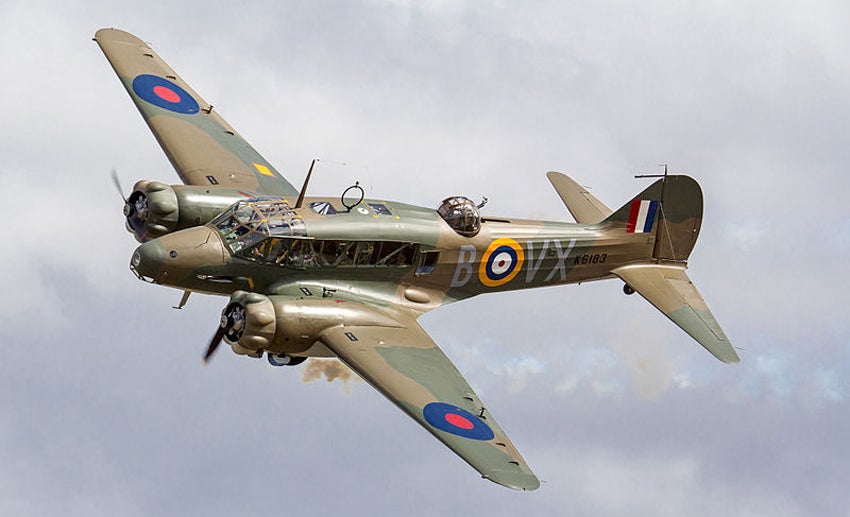
March 24, 1935 – The first flight of the Avro Anson. For a seafaring island nation such as England, keeping watch on the surrounding seas is a vital part of national security. In the 1930s, maritime patrol and reconnaissance was the purview of large flying boats, but those aircraft were expensive to build and operate, and required large crews. In 1933, the British Air Ministry issued a requirement for a smaller and simpler coastal patrol and maritime reconnaissance aircraft that could operate from land bases and supplement, though not entirely replace, the flying boats. The de Havilland Aircraft Company responded with their DH.89 Dragon Rapide , a twin-engine biplane airliner that carried 6-8 passengers, while Avro offered its Type 652A, a modified version of their Avro 652 airliner. In the ensuing competition, the Avro aircraft was deemed superior, and an initial contract for 174 aircraft was awarded in 1935. The name “Anson” given to the project in honor of 18th-century British Admiral of the Fleet George Anson . Like many aircraft developed in the years leading up to WWII, the Anson was a low wing cantilever monoplane with the wing constructed mostly of spruce plywood while the fuselage consisted of a metal tube framework covered with fabric. The landing gear, while retractable, required no less than 144 cranks of a handle in the cockpit to pull the wheels up, so many shorter flights were taken with the landing gear down. The Anson was powered by a pair of Armstrong Siddeley Cheetah radial engines that provided a top speed of 188 mph with a range of just under 800 miles. Initially, the Anson carried a crew of three. The pilot was responsible for aiming the fixed, forward-firing .303 caliber machine gun, while the radio operator/gunner manned a single .303 caliber Vickers K machine gun housed in a dorsal turret. A fourth crew member was added after 1938. In addition to the machine guns, up to 360 pounds of bombs could be carried on underwing stations. The Anson entered service with the RAF in March 1936, and though the it was designed for maritime patrol, it really came into its own as a training aircraft, and it’s patrol duties were taken over by the newly-arrived Lockheed Hudson .
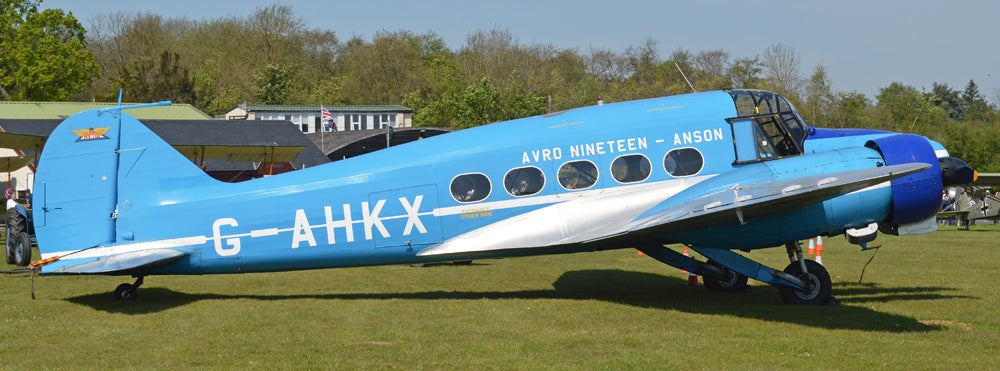
By the time England entered WWII, the RAF had 824 Ansons, the majority of which were used to train bomber crews in multi-engine aircraft operation before they transitioned to training in large bombers. It was also used to train navigators, radio operators and bombardiers, and a powered turret was added to train defensive gunners in aerial gunnery. After the war, production of the Anson continued for use as small civilian airliners and executive aircraft. By the time production finally ended in 1952, just over 11,000 Ansons had been built, with nearly 3,000 of those produced by Federal Aircraft in Canada, production numbers that are second only to the
Vickers Wellington
bomber in total aircraft built.
(Photo by Oren Rozen via
Wikimedia Commons
; photo by Alan Wilson via
Wikimedia Commons
)
!!! UNKNOWN CONTENT TYPE !!!
!!! UNKNOWN CONTENT TYPE !!!
!!! UNKNOWN CONTENT TYPE !!!
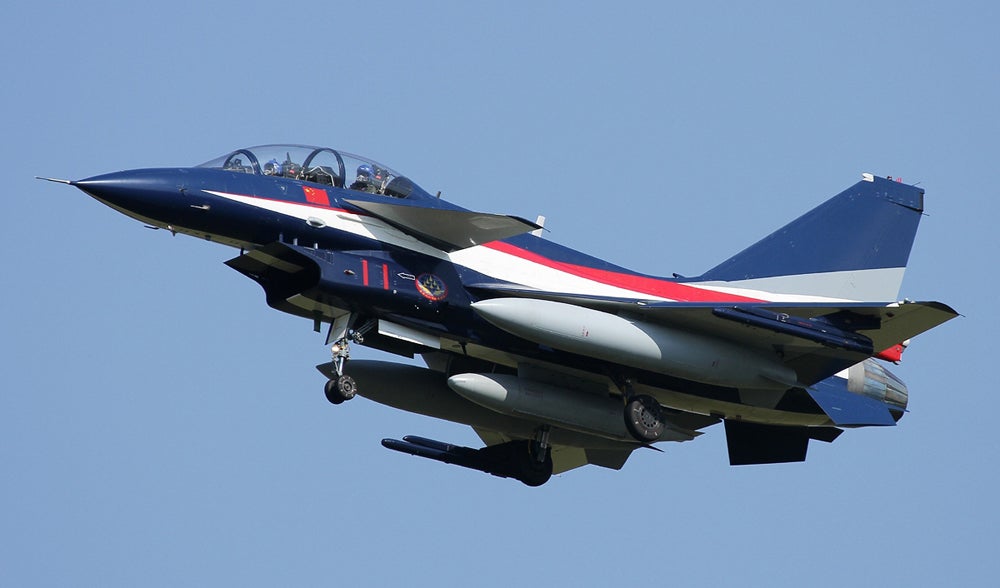
March 23, 1998 – The first flight of the Chengdu J-10, a lightweight, all-weather, multirole fighter developed and produced by the China’s Chengdu Aircraft Industry Group . The fighter features a delta wing and forward canard and bears a strong resemblance to the Eurofighter Typhoon , though it is powered by only a singe engine. In performance capability, the J-10 is comparable to the General Dynamics F-16 Fighting Falcon and the Dassault Rafale . Pakistan is the sole international customer for the J-10, though Iran has expressed an interest in the fighter as well. A total of 400 J-10s have been produced to date. (Photo by Aktug Ates via Wikimedia Commons )
!!! UNKNOWN CONTENT TYPE !!!

March 23, 1965 – The launch of Gemini 3. Gemini 3 was the third launch of the two-man Gemini program, and the first to carry astronauts into space. After launch, the crew of Virgil “Gus” Grissom and John Young made three orbits of the Earth, reaching an altitude of 139.3 miles at apogee . The mission was designed to test the maneuverability of the new Gemini spacecraft, and the crew used onboard thrusters to alter the craft’s altitude during flight for the first time. On splashdown, an error in wind tunnel testing caused the capsule to miss its landing point by 45 miles, and the astronauts had to wait 30 minutes for pickup. Grissom died in 1967 in a launchpad fire during a test of Apollo 1 , but Young went on to a long career with NASA, and served as the commander of the first two flights of the Space Shuttle . (NASA photo)
!!! UNKNOWN CONTENT TYPE !!!
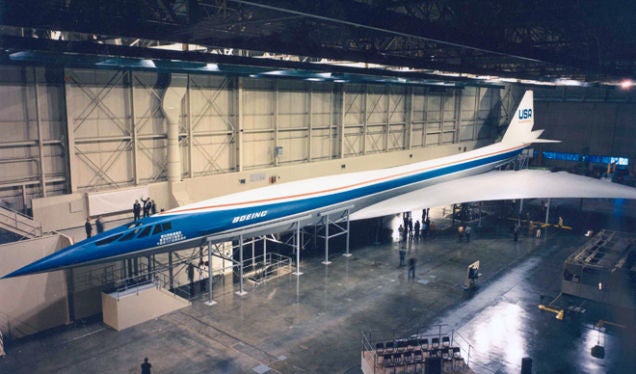
March 24, 1971 – Boeing cancels the B2707 supersonic transport.
Envisioned as a larger and faster supersonic transport to rival the
Aérospatiale/BAC Concorde
, the B2707 arose from a competition initiated by the National Supersonic Transport program announced by President Kennedy in 1963. The B2707 project advanced as far as the construction of two prototypes, neither of which were completed, before the project was canceled. Rising environmental concerns over pollution, fuel consumption and noise levels, as well as a lack of funding, ultimately led to the end of the program and the loss of as many as 60,000 jobs.
(Boeing photo)
!!! UNKNOWN CONTENT TYPE !!!
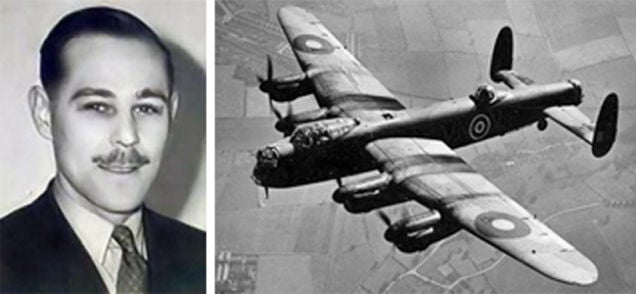
March 24, 1944 – RAF Flight Sergeant Nicholas Alkemade jumps out of his burning bomber without a parachute during a raid on Germany
. Alkemade’s
Avro Lancaster
was taking part in a raid on Berlin when his bomber was attacked and shot down by a
Junkers Ju 88
night fighter. With the bomber on fire and his parachute damaged, Alkemade decided it would be preferable to die from falling rather than being burned to death, so he bailed out at 18,000 feet and fell into a forest, where tree branches slowed his fall before he came to rest in a deep snowdrift. Alkemade survived the fall with severe bruising and a sprained leg. He was captured by German troops and finished the war as a POW. Alkemade died in 1987.
!!! UNKNOWN CONTENT TYPE !!!
!!! UNKNOWN CONTENT TYPE !!!
!!! UNKNOWN CONTENT TYPE !!!
!!! UNKNOWN CONTENT TYPE !!!
!!! UNKNOWN CONTENT TYPE !!!
!!! UNKNOWN CONTENT TYPE !!!
!!! UNKNOWN CONTENT TYPE !!!
If you enjoy these Aviation History posts, please let me know in the comments. And if you missed any of the past articles, you can find them all at Planelopnik History . You can also find more stories about aviation and aviators at Wingspan and Planes You’ve (Probably) Never Heard Of .
!!! UNKNOWN CONTENT TYPE !!!
 "X37.9XXS" (x379xxs)
"X37.9XXS" (x379xxs)
03/24/2017 at 12:45, STARS: 1
I had no idea that the Skynight had such a storied career
Thank you

03/24/2017 at 12:46, STARS: 1
I remember reading in Air & Space back in ‘89 or ‘90 about the B2707 mockup that was housed in a building used by the Osceola New Life Assembly of God church in Kissimmee. I’d have gone to church a lot more often if it was under the wing of an SST....
 "ttyymmnn" (ttyymmnn)
"ttyymmnn" (ttyymmnn)
03/24/2017 at 12:47, STARS: 1
It’s actually one of my favorite aircraft from that era.
 "ttyymmnn" (ttyymmnn)
"ttyymmnn" (ttyymmnn)
03/24/2017 at 12:48, STARS: 1
I never thought of an SST serving as a religious icon, or maybe a religious metaphor. It get my reverence.
 "RallyWrench" (rndlitebmw)
"RallyWrench" (rndlitebmw)
03/24/2017 at 13:04, STARS: 0
Interesting that the A6 borrowed the side-by-side cockpit idea from the Skyknight, both great aircraft. That Alkemade story is just incredible!
 "ttyymmnn" (ttyymmnn)
"ttyymmnn" (ttyymmnn)
03/24/2017 at 13:30, STARS: 2
I’m not sure Grumman necessarily borrowed it. It was just a useful arrangement so both crew members could share the same radar screen, and it improved communications between the two crew members as they worked together on tracking and targeting. That’s also why the F-111 is side by side. The F-111 was supposed to be flown by both the USAF and USN. The Navy wanted tandem seating, the AF wanted side by side. The plan was to build the AF version first, then adapt it for the Navy. But the Navy bailed, and got their tandem seating in the F-14.
 "Jonathan Harper" (jbh)
"Jonathan Harper" (jbh)
03/24/2017 at 13:31, STARS: 0
Pretty much the only reason I still read Oppo, thanks!
 "ttyymmnn" (ttyymmnn)
"ttyymmnn" (ttyymmnn)
03/24/2017 at 13:33, STARS: 0
Wow. Thanks. I’m glad you enjoy it, and thanks for reading.
 "AfromanGTO" (afromangto)
"AfromanGTO" (afromangto)
03/24/2017 at 14:05, STARS: 0
Good read today good sir!
 "ttyymmnn" (ttyymmnn)
"ttyymmnn" (ttyymmnn)
03/24/2017 at 14:11, STARS: 0
Thank you! I almost missed the Germanwings anniversary. It’s a lot harder to keep track of more recent events. Thanks for reading.
 "AfromanGTO" (afromangto)
"AfromanGTO" (afromangto)
03/24/2017 at 14:14, STARS: 1
I forget about it until I read your article. Good job!
 "You can tell a Finn but you can't tell him much" (youcantellafinn)
"You can tell a Finn but you can't tell him much" (youcantellafinn)
03/24/2017 at 15:15, STARS: 1
The early silver spacesuits are... “stylish”. They look like they were inspired by Buck Rogers.
 "The Powershift in Steve's '12 Ford Focus killed it's TCM (under warranty!)" (steve-still-hasnt-wrecked-the-powershift-in-his-12-ford-focus)
"The Powershift in Steve's '12 Ford Focus killed it's TCM (under warranty!)" (steve-still-hasnt-wrecked-the-powershift-in-his-12-ford-focus)
03/24/2017 at 16:30, STARS: 0
Seconded. I check every other day to catch up on your Aviation History posts.
 "ttyymmnn" (ttyymmnn)
"ttyymmnn" (ttyymmnn)
03/24/2017 at 16:34, STARS: 0
Tuesday and Friday, 12:35 ET. I also notice you catching up on older posts! Thanks for reading. It makes the work worthwhile when I know people are enjoying them.
 "Cé hé sin" (michael-m-mouse)
"Cé hé sin" (michael-m-mouse)
03/24/2017 at 19:05, STARS: 0
By the time production finally ended in 1952, just over 11,000 Ansons had been built
They built planes in really big numbers back than didn’t they?
 "ttyymmnn" (ttyymmnn)
"ttyymmnn" (ttyymmnn)
03/24/2017 at 19:14, STARS: 0
Well, there was a war and all. But, yes, they did.